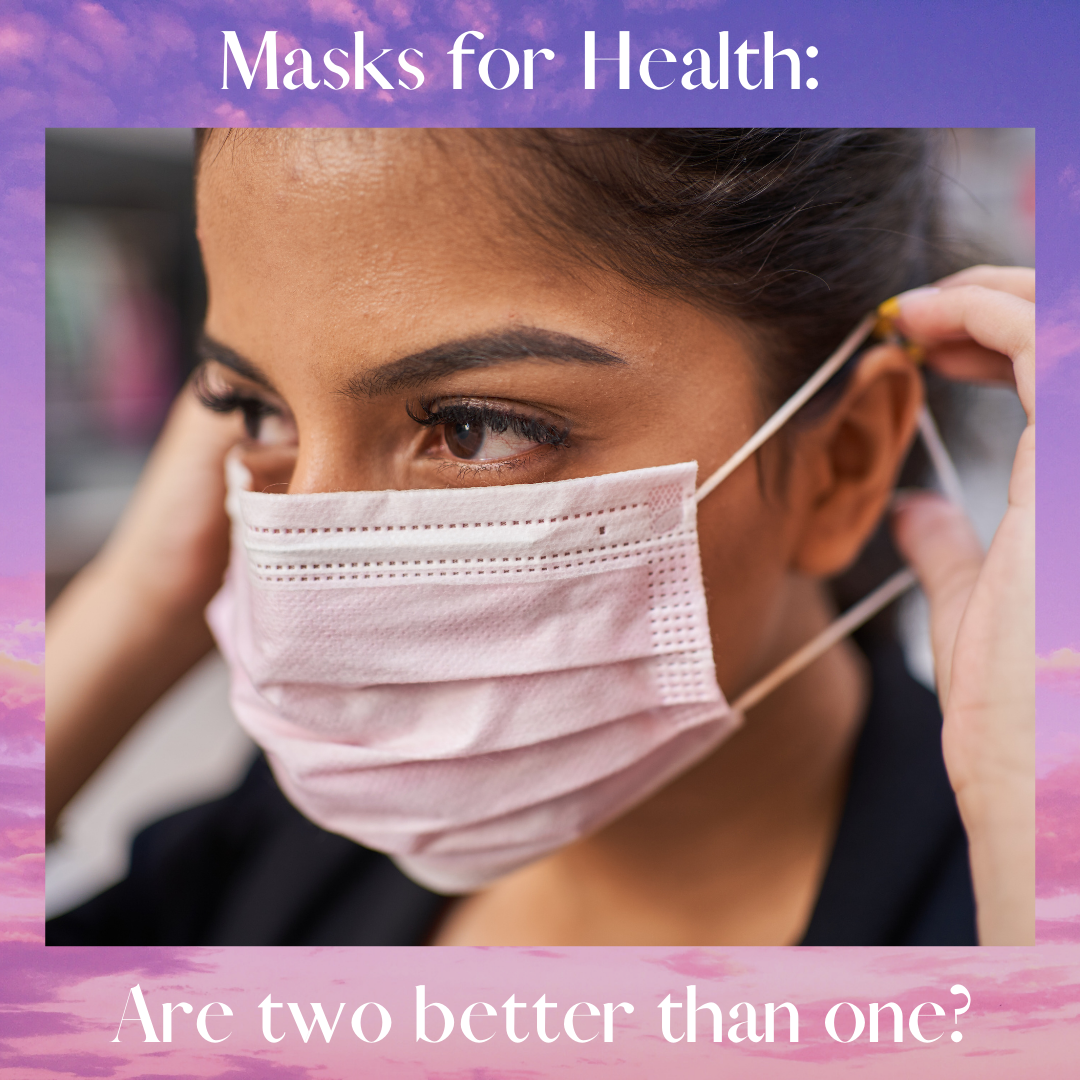Masks for Health: Are Two Better than One?

Masks for Health: Are Two Better than One?
We have all heard it multiple times. If we are going to continue to fight the spread of the COVID-19 infection (and its variants), even as the vaccination process is now well underway, frequent hand-washing, social distancing (staying at least six feet from another person, avoiding crowds and places with poor ventilation), and wearing a facial mask to prevent the inhaling of droplet-containing viruses released from the breathing of a fellow human being (in addition to controlling the escape of one’s own mouth and nose droplets and secretions), are recommended and effective self-protective measures. Given the necessarily long rollout of the vaccination process (and the fact that many people thus far are unwilling to be vaccinated for a variety of reasons), it is likely that these “simple” protective measures will be required for many months ahead. Since that is the case, we must be certain to get them right. No one wants to, or should, be infected with the COVID-19 virus! It can do a great deal of harm – and, for far-too-many of us, it can be deadly. Right now, we are gaining on the virus. Let’s keep it up!!
Not surprisingly, using the facial mask correctly to achieve maximum protection (universal masking) is not as simple as it would seem. As we have all seen, there are clearly a wide range of mask-wearing “styles.” There is the below-the-nose style. Next, there is the off-the-face style. Then, there is “gaposis,” where the sides of the mask are loose, allowing the free outflow of air and the droplets containing the virus from an infected person. Some people have designer cloth masks, bandanas, and over-the-chin and nose T-shirts, while others have surgical or medical procedure masks and still, others the professional-grade N95 respirator mask. In fact, it might well be said that there are more ways to wear the various types of masks wrong than right. Some authorities are now suggesting that we each wear two different types of masks – one over the other.
What’s the story? How can each of achieve maximal protection for ourselves (and others) with the facial masks?
To help us, the February 10, 2021, edition of the U.S. Centers for Disease Control and Prevention’s prestigious Morbidity and Mortality Weekly Report (MMWR) reports the results of a study by the CDC COVID-19 Emergency Response Team just conducted (by simulation) on how to best wear face masks for maximal protection against the virus.

Of course, it takes two to tango, as they say. When the source (cougher) and the receiving head were both fitted with double masks (cloth and medical procedure) or knotted and tucked (closely-fitted) medical-procedure masks, exposure to the undesired particles for the receiver was reduced by 96%.As reported, the results show that the unknotted medical mask alone blocked 56% of the particles from a simulated cough, while the cloth mask used alone blocked 51% of the particles. A combination of the cloth mask plus the medical-procedure mask trapped 85% of the cough particles, making it by far the best for the source.
The message is clear. Double masks (cloth and medical-procedure) or a very well-fitted medical-procedure mask (knotted and tucked to eliminate escaping air and the droplets it contains) provide the best protection. At the same time, we need each other to wear masks that are properly fitted. In other words, we need each other, and, in consideration of that fact, we all have to wear the masks we do wear properly – no uncovered nose, no gaposis, and a good fit. For most of us, two masks are better than one!
It is not hard. We just need to do it. If we care for one another’s health and life, as we do, it is the least we can do!! Let’s do it!!!
Brooks JT, Beezhold DH, Noti JD, et al. Maximizing Fit for Cloth and Medical Procedure Masks to Improve Performance and Reduce SARS-CoV-2 Transmission and Exposure, 2021. MMWR Morb Mortal Wkly Rep. ePub: 10 February 2021. DOI: http://dx.doi.org/10.15585/mmwr.mm7007e1external icon
Barry H. Smith, MD, PhD
